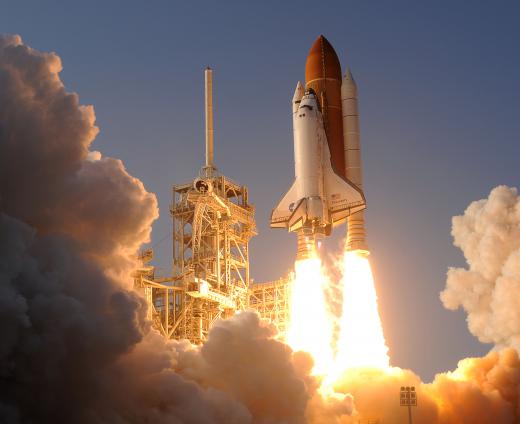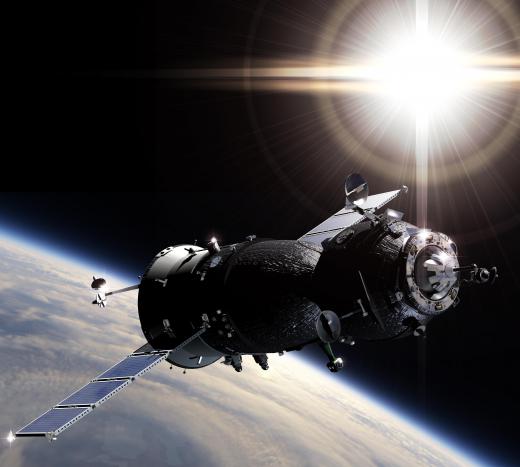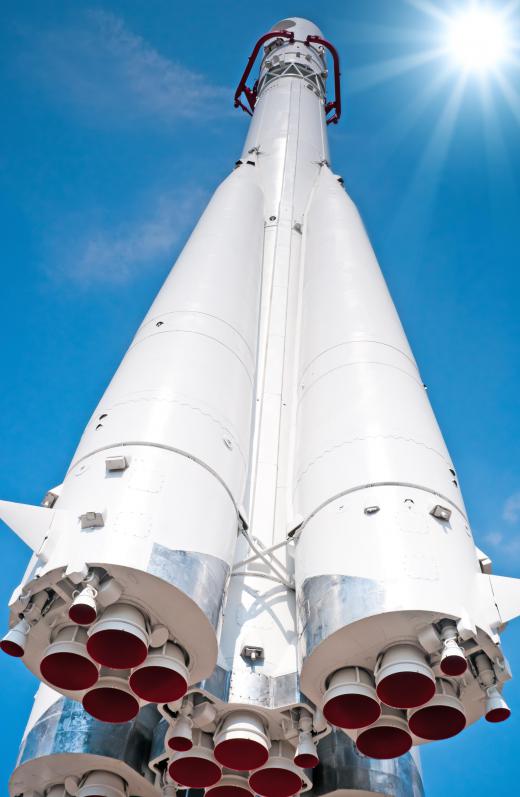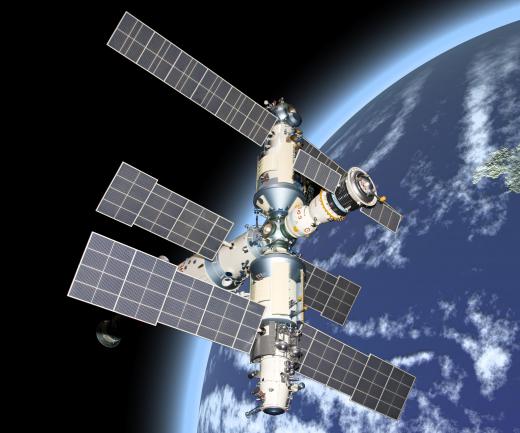How Far from the Earth is the International Space Station?
 Tricia Christensen
Tricia Christensen
Most of the time, the International Space Station (ISS) is orbiting the Earth at an altitude of approximately 220 miles (354 km), which places it in low Earth orbit (LEO). This distance can change, however, and has varied from 205 miles (330 km) to a planned maximum of 248 miles (400 km). Even at these heights, there is a small amount of drag from the extremely thin atmosphere, which slows the station’s orbital speed and brings it closer to the surface. This effect is greater for the space station than for other satellites because of its relatively large size. Sometimes, the height is adjusted upwards to compensate for this effect or in anticipation of increased drag due to the interaction between solar activity and the Earth’s upper atmosphere.
Low Earth Orbit

The low Earth orbit zone extends out to about 1,243 miles (2,000 km) from the surface of the planet. The main advantage of putting something in this zone is that journey times to and from the satellite are short, and less fuel is used in transporting materials or crew back and forth. The disadvantage is that there will be some drag from the atmosphere, which extends into this region of space, albeit in very thin form. This means that objects in LEO have to have their orbits adjusted from time to time, or else they will slow down, fall steadily closer to the Earth, and eventually crash. Satellites that don't need to be visited will normally be placed in a higher orbit, but LEO is preferred for manned space stations or other objects that require frequent manned or unmanned visits.
Finding the Right Orbit

Keeping an object in LEO at a given altitude requires fuel, or propellant, to be used, either to maintain its speed or to boost it to a greater height if it has descended slightly. Closer to the Earth, less propellant is needed on trips to the space station, but the atmospheric drag is greater, so more fuel is used to keep it on track. Further away from the earth, the ISS uses less fuel maintaining its orbit, but more is used keeping the station supplied and transferring crew. A balance has to be struck between these factors.

At an altitude of 220 miles (354 km), the ISS uses about 19,000 lb (8618 kg) of propellant each year adjusting its orbit. At its planned orbit of 248 miles (400 km), the station will require fewer adjustments, and would only need to use 8,000 lb (3629 kg) of fuel. This means that supply rockets, although they will use more fuel, can carry less for the station, leaving more room for other items.

Other factors affecting the International Space Station’s altitude are solar activity, solar and cosmic radiation, and space junk. When solar activity is high, it increases the density of the atmosphere at very high altitudes, increasing the drag on the station, so that its orbit needs to be adjusted upward. Since the station is carrying a human crew, however, the effects of increased exposure to ionizing radiation from the Sun and from cosmic rays have to be considered, which limits how far the orbital distance can be increased.
Space junk, made up of bits and pieces discarded by rockets and other debris, is also very common at LEO and needs to be avoided. Ideally, the station's orbit will keep it out of the way of known objects, but the ISS can be moved slightly higher or lower to avoid debris, if it's detected in advance and thought to be a threat. Other times, crew members can temporarily relocate to the Soyuz spacecraft in case the debris hits the station and causes serious damage.
AS FEATURED ON:
AS FEATURED ON:














Discussion Comments
Bearing in mind the size of the earth, how is it possible to see the curvature of the earth at only 220 miles above the surface of the earth? Surely this would be impossible?
How ridiculous - the naked eye can not see a large lorry at a distance of 4 mile. It's impossible to see the ISS at the claimed 220 miles away, a factor of 50x further away.
Admittedly, lighted objects would be easier to pick out at further distances, but 220 miles (given the light output of the ISS), no chance !
@Fa5t3r - I'm really hoping that they discover some kind of mineral on Mars or possibly somewhere else nearby (like an asteroid) which it would be feasible to mine. When you think about how much money is poured into the mining industry, you can see that if that money was poured into space it would open up huge avenues of research.
The only problem then would be getting scientists to hitchhike on the mining exploitation voyages. I'm sure a compromise could be worked out. And the space station could become a real station, as in a point between voyages, rather than the end point from Earth.
@Alchemy - It's just such an amazing thing that countries which, only a few decades ago were at war, have contributed to such a brilliant example of human ingenuity. I mean, there are people living 220 miles away from planet Earth. An average human being couldn't have even conceived of that idea only a couple of hundred years ago.
I know people tend to become against the space program when they are worried about the economy but it's such a small fraction of money compared with military budgets and it has resulted in so many discoveries that have benefited everyone (many materials we use in everyday life were invented for astronauts). I hope it continues and the international space station is only the beginning.
@ Highlighter- Six agencies have been involved in the design and building of the international space station, but the European Space Agency is actually comprised of numerous participating nations. The Contributors to the space station are NASA, Russian Space Agency, European Space Agency, Japanese Space Agency, Canadian Space Agency, and the Brazilian Space Agency. The European Space Agency has ten nations that have participated in the International Space Station Project. the countries form Europe that have participated are: Belgium, Denmark, France, Germany, Italy, The Netherlands, Norway, Spain, Sweden, and Switzerland.
What countries are involved in the international space station project?
(1) astronomical observation from moon surface vis-a-vis low earth orbiting observatory
(2) if earths gravitational field collapses for few seconds then what worst or best can happen?
Post your comments